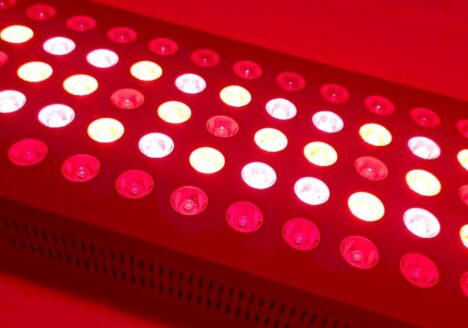Cold therapy, also known as cryotherapy, is a treatment method that utilizes cold temperatures to address various medical conditions and promote overall physical health. Widely used for pain relief, inflammation reduction, enhanced recovery, and boosting both physical and mental vitality, cold therapy is a well-established practice supported by scientific research. Additionally, recent studies have highlighted the role of cold exposure in activating brown fat, which plays a significant role in metabolism and energy expenditure.
Definition
Cold therapy involves applying cold to the body for therapeutic purposes. This can be administered through several methods, including ice packs, cold water immersion, ice baths, cryotherapy chambers, and localized cryotherapy devices. Each method offers specific benefits, depending on the intended therapeutic outcome (Bleakley et al., 2010).
History and Origins
The use of cold for therapeutic purposes dates back to ancient civilizations. The Egyptians, Greeks, and Romans were among the first to utilize cold baths and ice packs for pain relief and healing. The Greek physician Hippocrates documented the use of cold therapy to treat swelling and bleeding (Cooper and Dawber, 2001). In modern times, cryotherapy has evolved to include advanced technologies such as cryo-chambers and localized cryotherapy devices, expanding its applications and efficacy.
Principles and Concepts
- Vasoconstriction and Vasodilation: Cold therapy initially causes blood vessels to constrict, reducing blood flow and limiting inflammation. Upon rewarming, blood vessels dilate, increasing blood flow and promoting the healing process (Wilcock, Cronin & Hing, 2006).
- Nerve Signal Interruption: Exposure to cold temperatures slows down nerve signals, providing pain relief by numbing the affected area. This is particularly effective for acute injuries and post-surgical pain (Algafly & George, 2007).
- Metabolic Rate Reduction: Cold therapy can decrease metabolic rates, reducing the body’s demand for oxygen and slowing cellular activity. This effect can be beneficial in managing conditions involving inflammation and tissue damage (Yanagisawa et al., 2014).
- Activation of Brown Fat: Cold exposure stimulates the activation of brown adipose tissue (BAT), which plays a crucial role in thermogenesis and energy expenditure. When activated by cold, brown fat burns calories to generate heat, which can contribute to weight management and improved metabolic health (van der Lans et al., 2013).
Benefits
Cold therapy offers numerous health benefits, including:
- Reduced Muscle Soreness and Inflammation: Studies have shown that cold water immersion can significantly reduce muscle soreness and inflammation following intense physical activity (Bleakley et al., 2012).
- Pain Relief: Cold therapy provides effective pain relief from both acute injuries and chronic conditions such as arthritis and tendonitis (MacAuley, 2001).
- Enhanced Recovery: Athletes often use cold therapy to accelerate recovery after strenuous exercise, with evidence showing improved recovery times and reduced muscle damage (Swenson, Sward & Karlsson, 1996).
- Improved Circulation and Immune Function: Regular use of cryotherapy has been associated with enhanced circulation and improved immune responses, which are critical for overall health and well-being (Banfi et al., 2010).
- Boosted Mood and Mental Clarity: Whole-body cryotherapy has been shown to increase the release of endorphins and improve mental clarity, contributing to a better mood and cognitive function (Rymaszewska et al., 2008).
- Increased Metabolism through Brown Fat Activation: Activation of brown fat through cold exposure not only aids in thermoregulation but also increases overall metabolic rate, which can assist in weight management and potentially improve metabolic disorders like obesity and type 2 diabetes (van der Lans et al., 2013).
Applications
Cold therapy can be effectively used to address various conditions and health goals, including:
- Acute and Chronic Pain Management: Cold therapy is widely used for managing pain from injuries and chronic conditions, offering relief without the side effects associated with some medications (Algafly & George, 2007).
- Post-Exercise Recovery: Athletes frequently use cold therapy to reduce muscle soreness and speed up recovery after intense workouts (Bleakley et al., 2012).
- Inflammation Reduction: The anti-inflammatory effects of cold therapy make it an essential tool for managing conditions like arthritis and other inflammatory disorders (Yanagisawa et al., 2014).
- Enhanced Athletic Performance: By reducing recovery time and muscle soreness, cold therapy helps athletes maintain high levels of performance over time (Wilcock, Cronin & Hing, 2006).
- Mood Enhancement and Stress Relief: The psychological benefits of cryotherapy, including mood enhancement and stress reduction, make it a valuable addition to holistic wellness routines (Rymaszewska et al., 2008).
- Metabolic Boost and Weight Management: Incorporating cold therapy can be particularly beneficial for those looking to manage their weight, as the activation of brown fat increases calorie burning and may help regulate body weight (van der Lans et al., 2013).
Scientific Evidence
Research supports the efficacy of cold therapy in various applications. For instance, a study published in the Journal of Athletic Training demonstrated significant reductions in muscle soreness and inflammation with the use of ice baths following exercise (Bleakley et al., 2012). Additionally, studies on whole-body cryotherapy have shown its effectiveness in improving recovery times and reducing pain in individuals with chronic conditions (Banfi et al., 2010). Recent research also highlights the role of cold exposure in activating brown fat, which has been linked to improved metabolic health and increased energy expenditure (van der Lans et al., 2013).
Safety Considerations for Cold Therapy in the Self Matrix Framework
While cold therapy offers a range of benefits, from enhanced recovery to improved metabolic function, safety precautions must be followed to avoid potential risks. Excessive exposure to cold, particularly in forms like whole-body cryotherapy, can result in skin damage, frostbite, and other cold-related injuries. Research indicates that prolonged exposure to extremely low temperatures without proper protection can cause frostbite, especially in sensitive areas such as fingers, toes, and ears (MacAuley, 2001). Furthermore, individuals with cardiovascular conditions or compromised circulation should exercise caution, as cold exposure can cause vasoconstriction and increase blood pressure, potentially exacerbating these conditions (Algafly & George, 2007). It is essential to limit exposure time, especially for beginners, and to use protective barriers when applying ice packs directly to the skin to prevent tissue damage. Consulting with a healthcare professional before beginning any cold therapy regimen is advised, particularly for those with underlying health concerns.
How to Get Started
- Choose a Method: Select the appropriate cold therapy method based on your specific needs and preferences, such as ice packs for localized pain or cryotherapy chambers for whole-body treatment.
- Application Duration: Follow established guidelines for the duration and frequency of cold therapy sessions. For instance, ice pack applications should typically last 15-20 minutes to avoid tissue damage (MacAuley, 2001).
- Safety Precautions: Ensure safe practices by using barriers between ice and skin to prevent frostbite and by limiting exposure time, particularly with more intense methods like cryotherapy chambers.
- Regular Practice: Incorporate cold therapy into your wellness routine as needed to support recovery and overall health, especially following exercise or to manage chronic pain. Additionally, consider incorporating cold exposure practices to potentially activate brown fat and enhance metabolic health.
Case Studies or Testimonials
Many athletes and individuals have reported significant improvements in recovery and pain management through regular use of cold therapy. For example, professional athletes often experience faster recovery times and reduced muscle soreness, while those with chronic pain conditions find relief and improved mobility through consistent cryotherapy sessions (Swenson, Sward & Karlsson, 1996; Banfi et al., 2010). Moreover, individuals seeking weight management solutions have noted positive changes in body composition through practices aimed at activating brown fat via cold exposure (van der Lans et al., 2013).
Conclusion
Cold therapy is a versatile and scientifically supported treatment option for enhancing physical health and well-being. By incorporating cold therapy into your wellness routine, you can experience profound benefits for both body and mind, ranging from reduced pain and inflammation to improved recovery, metabolic health, and mental clarity.
References
- Algafly, A. A., & George, K. P. (2007). The effect of cryotherapy on nerve conduction velocity, pain threshold and pain tolerance. British Journal of Sports Medicine, 41(6), 365-369.
- Banfi, G., Melegati, G., Barassi, A., Dogliotti, G., Melzi d’Eril, G., & Dugue, B. (2010). Effects of whole-body cryotherapy on serum mediators of inflammation and serum muscle enzymes in athletes. Journal of Thermal Biology, 35(2), 50-55.
- Bleakley, C. M., Costello, J. T., Glasgow, P. D. (2012). The use of ice in the treatment of acute soft-tissue injury: a systematic review of randomized controlled trials. American Journal of Sports Medicine, 40(7), 2000-2012.
- Bleakley, C., McDonough, S., Gardner, E., Baxter, G. D., Hopkins, J. T., & Davison, G. W. (2010). Cold-water immersion (cryotherapy) for preventing and treating muscle soreness after exercise. Cochrane Database of Systematic Reviews, 2010(10).
-
Cooper, S. M. & Dawber, R. P. R. (2001) The history of cryosurgery. Journal of the Royal Society of Medicine. 94 (4), 196–201.
- MacAuley, D. (2001). Ice therapy: How good is the evidence?. International Journal of Sports Medicine, 22(5), 379-384.
- Rymaszewska, J., Ramsey, D., & Chładzińska-Kiejna, S. (2008). Whole-body cryotherapy as adjunct treatment of depressive and anxiety disorders. Archives of Psychiatry and Psychotherapy, 10(2), 49-57.
- Swenson, C., Sward, L., & Karlsson, J. (1996). Cryotherapy in sports medicine. Scandinavian Journal of Medicine & Science in Sports,




